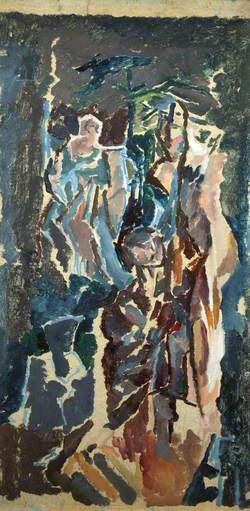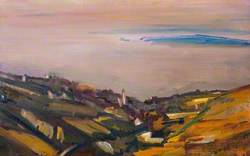How you can use this image
This image can be used for non-commercial research or private study purposes, and other UK exceptions to copyright permitted to users based in the United Kingdom under the Copyright, Designs and Patents Act 1988, as amended and revised. Any other type of use will need to be cleared with the rights holder(s).
Review the copyright credit lines that are located underneath the image, as these indicate who manages the copyright (©) within the artwork, and the photographic rights within the image.
The collection that owns the artwork may have more information on their own website about permitted uses and image licensing options.
Review our guidance pages which explain how you can reuse images, how to credit an image and how to find images in the public domain or with a Creative Commons licence available.
Notes
Add or edit a note on this artwork that only you can see. You can find notes again by going to the ‘Notes’ section of your account.
Painted in the aftermath of the First World War, this work is characterised by its muted, drab, brown palette. Far from a centre of artistic creativity, Bomberg’s studio, with its empty easel, bare floorboards and barred window frame is a barren, hopeless place. Bomberg enlisted during the First World War and served in the trenches. Temporarily discharged after shooting himself in the foot, he was later returned to his unit as a runner. He was released in 1918 to work on a commission of sappers (or tunnellers) at work for the Candadian War Memorials Fund. Both unhappy experiences left him disillusioned. Before the war Bomberg had been associated with the Vorticists, whose hard-edged imagery celebrated the modern, urban environment, but after the war his work became more expressive and looser in handling.
Title
The Studio
Date
1919
Medium
oil on board
Measurements
H 74.3 x W 49 cm
Accession number
1987-48
Acquisition method
purchased, 1920
Work type
Painting








